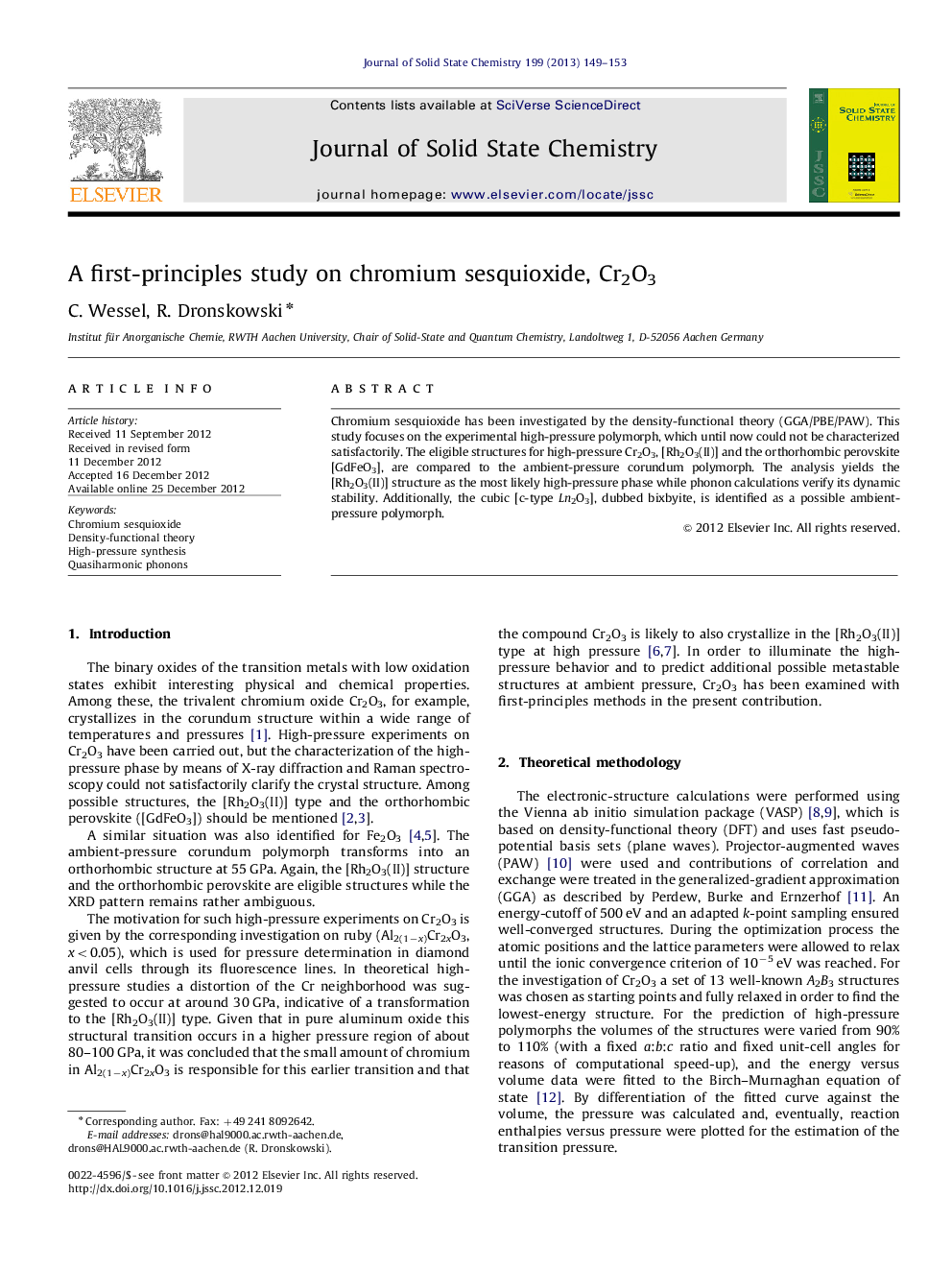| Article ID | Journal | Published Year | Pages | File Type |
|---|---|---|---|---|
| 1329993 | Journal of Solid State Chemistry | 2013 | 5 Pages |
Chromium sesquioxide has been investigated by the density-functional theory (GGA/PBE/PAW). This study focuses on the experimental high-pressure polymorph, which until now could not be characterized satisfactorily. The eligible structures for high-pressure Cr2O3, [Rh2O3(II)] and the orthorhombic perovskite [GdFeO3], are compared to the ambient-pressure corundum polymorph. The analysis yields the [Rh2O3(II)] structure as the most likely high-pressure phase while phonon calculations verify its dynamic stability. Additionally, the cubic [c-type Ln2O3], dubbed bixbyite, is identified as a possible ambient-pressure polymorph.
Graphical abstractA theoretical high-pressure study on chromium sesquioxide indicates that Cr2O3 is likely to adopt the Rh2O3(II) structure type at high pressure, and the latter structure appears as a minimum on the potential energy surface.Figure optionsDownload full-size imageDownload as PowerPoint slideHighlights► Ab initio calculations predict the [Rh2O3(II)] type as a possible Cr2O3 high-pressure polymorph. ► Phonon calculations indicate that Cr2O3 adopting the [Rh2O3(II)] type is dynamically stable. ► The calculation of the effective coordination number according to Brunner and Schwarzenbach yields a preferred coordination number larger than 5.5 for high-pressure Cr2O3. ► The bixbyite type is identified as an energetically promising candidate for a new Cr2O3 polymorph at ambient pressure.
